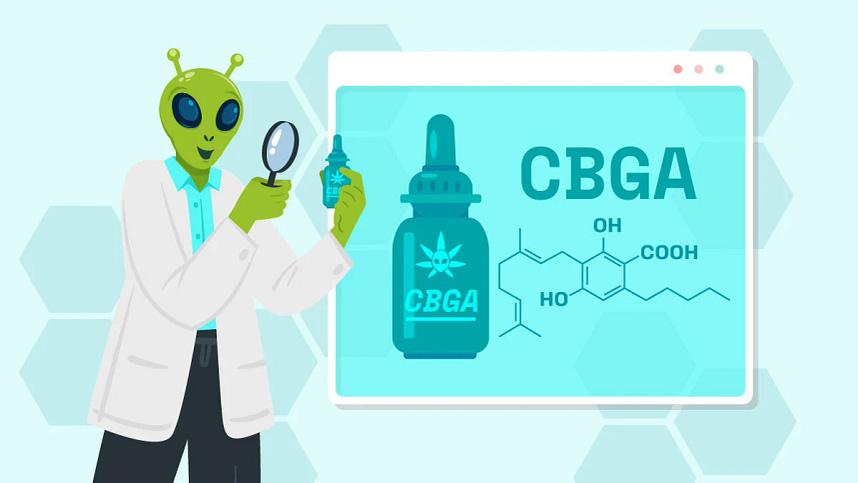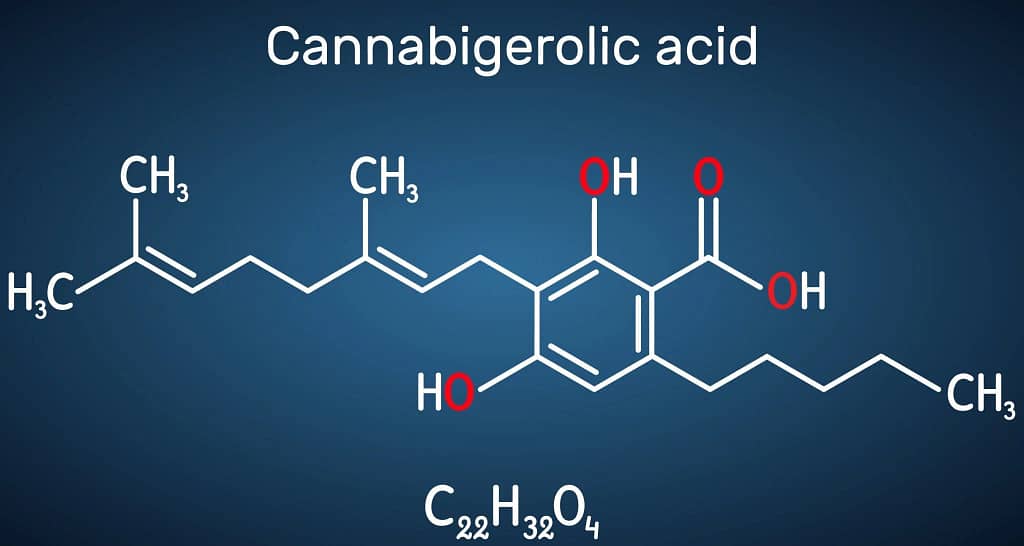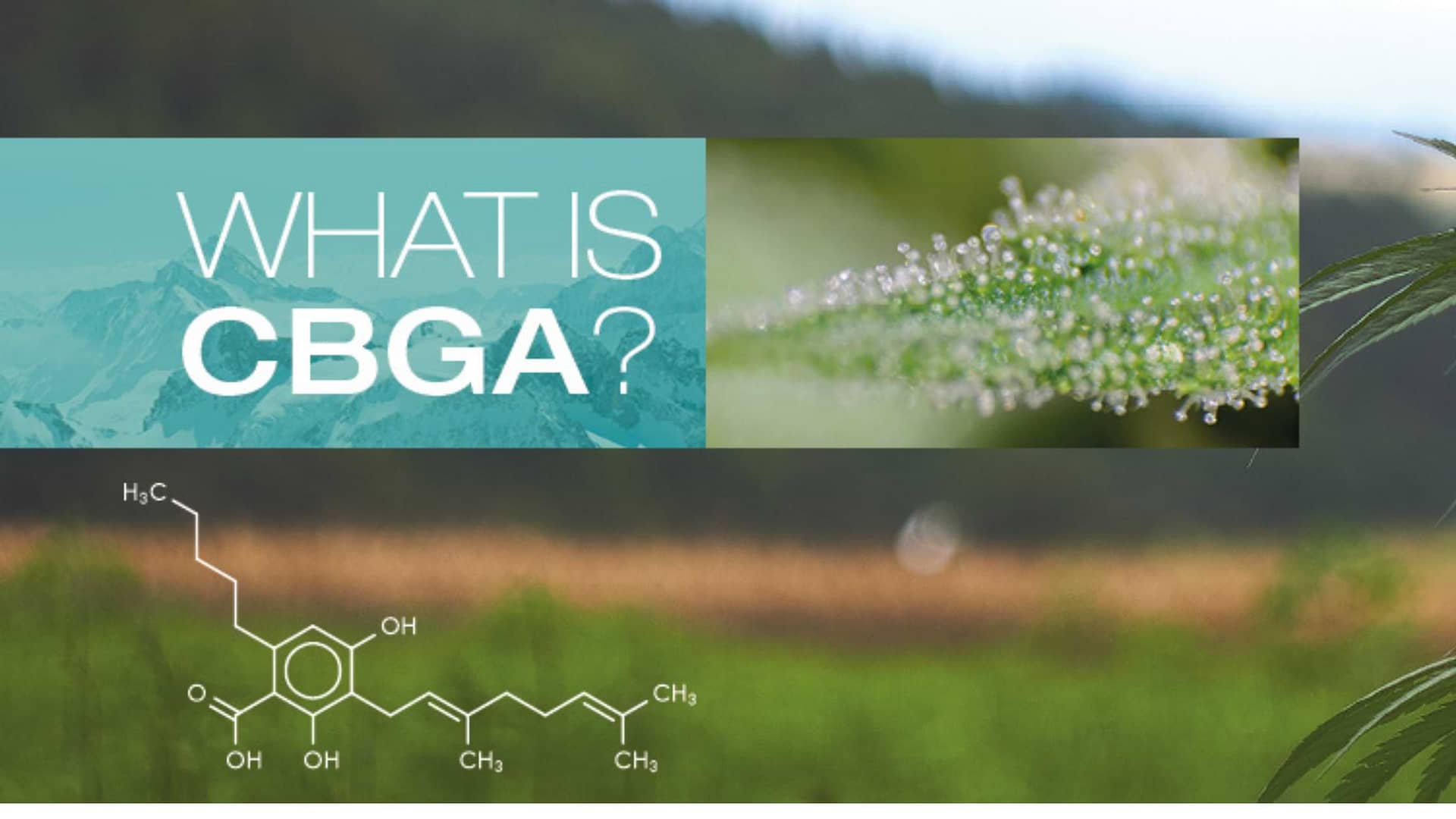Cannabigerolic Acid (CBGA) is a foundational cannabinoid within the cannabis plant that serves as a precursor to a range of other cannabinoids. In this comprehensive overview, we will delve into the multifaceted world of what is CBGA, exploring its molecular structure, biological functions, potential health benefits, extraction methods, industrial applications, and more. It would be good to know the science behind CBD before getting into CBGA.
Table of Contents
- 1 What is CBGA?
- 2 The Science Behind CBGA
- 3 CBGA vs. Other Cannabinoids
- 4 Health Benefits of CBGA
- 5 Extraction and Production of CBGA
- 6 CBGA in the Cannabis Industry
- 7 Future Research and Developments
- 8 Conclusion
- 9 Frequently Asked Questions (FAQs)
- 10 Q1. What is CBGA, and how does it differ from other cannabinoids like THC and CBD?
- 11 Q2. How is CBGA extracted from cannabis plants, and what factors influence the extraction process?
- 12 Q3. Are there any potential side effects or risks associated with CBGA consumption?
- 13 Q4. Can CBGA be used to manage chronic pain and inflammation?
- 14 Q5. Is CBGA legal in all regions where cannabis is prohibited?
- 15 Q6. Can CBGA be used as an alternative to traditional pharmaceuticals for certain health conditions?
- 16 Q7. How can consumers identify products that contain CBGA, and what should they look for on product labels?
- 17 Q8. Is CBGA the same as CBG (Cannabigerol), and do they have similar effects?
- 18 Q9. Can CBGA be used in combination with other cannabinoids for enhanced effects?
- 19 Q10. How can individuals stay informed about the latest developments in CBGA research and products?
What is CBGA?

Cannabigerolic Acid (CBGA) is a lesser-known but essential cannabinoid in the cannabis plant. Often referred to as the “mother cannabinoid,” CBGA is a precursor in the complex biosynthesis pathway that leads to the production of other well-known cannabinoids such as THC, CBD, and CBG. Its pivotal role lies in being the starting point for cannabinoid synthesis, which is influenced by genetics and environmental factors.
The Science Behind CBGA
CBGA boasts a fascinating molecular structure that sets the stage for its interactions within the human body. Comprising a terpene and a resorcinol group, CBGA interacts indirectly with the endocannabinoid system (ECS). The ECS plays a vital role in regulating various physiological processes, including mood, pain perception, and immune responses.
CBGA vs. Other Cannabinoids
In the vast landscape of cannabinoids, CBGA stands out for its unique characteristics. It does not bind directly to cannabinoid receptors in the same manner as THC. Instead, it indirectly influences the ECS, potentially contributing to the entourage effect—an intriguing phenomenon where multiple cannabinoids work in synergy to produce a combined effect.
Unlike THC, CBGA is non-psychoactive, meaning it does not induce a “high” or altered state of consciousness. This makes CBGA an attractive option for those seeking potential health benefits without the psychoactive effects associated with THC.
| Cannabinoid | CBGA (Cannabigerolic Acid) | THC (Tetrahydrocannabinol) | CBD (Cannabidiol) | CBG (Cannabigerol) |
| Psychoactivity | Non-psychoactive | Psychoactive | Non-psychoactive | Non-psychoactive |
| Role | Precursor to other cannabinoids | Primary psychoactive cannabinoid | Non-psychoactive cannabinoid | Non-psychoactive cannabinoid |
| Interaction with ECS | Indirect interaction | Direct interaction | Indirect interaction | Indirect interaction |
| Effects | Potential therapeutic benefits, including anti-inflammatory, pain management, and more | Euphoria, altered perception, increased appetite | Potential therapeutic benefits, including anxiety relief, pain management, and more | Potential therapeutic benefits, including pain relief, anti-inflammatory effects, and more |
| Legal Status | Legal in some regions, subject to regulations | Legal in some regions, subject to regulations | Legal in many regions, subject to regulations | Legal in many regions, subject to regulations |
| Research | Ongoing research to explore potential health benefits | Extensive research, both therapeutic and recreational use | Extensive research, with a focus on therapeutic applications | Growing interest in its potential therapeutic effects |
Health Benefits of CBGA
Research on CBGA is still in its early stages, but initial findings suggest a range of potential health benefits:
- Anti-Inflammatory Properties: CBGA exhibits anti-inflammatory properties, making it a promising candidate for conditions involving inflammation, such as arthritis.
- Pain Management: CBGA play a role in pain management by interacting with the ECS and modulating pain perception.
- Neuroprotection: Some studies indicate that CBGA have neuroprotective properties, which could have implications for neurological conditions like Alzheimer's disease.
- Anti-Anxiety Effects: Early research suggests that CBGA have anxiolytic (anxiety-reducing) effects, offering potential relief for individuals dealing with anxiety and stress.
- Antibacterial Activity: CBGA has shown antibacterial properties in laboratory settings, which hold promise for combating bacterial infections.
Extraction and Production of CBGA
The extraction of CBGA is a critical step in harnessing its potential for various applications. Several techniques can be employed to isolate CBGA from cannabis plants, including solvent extraction, supercritical CO2 extraction, and steam distillation. The choice of extraction method can significantly influence the purity and quality of the extracted CBGA.
Within the cannabis cultivation industry, breeders and growers focus on developing strains with high CBGA content. These specialized strains are cultivated to maximize CBGA production, catering to the growing demand for this intriguing cannabinoid.
CBGA in the Cannabis Industry
The significance of CBGA within the cannabis industry cannot be overstated. As the precursor to many other cannabinoids, CBGA is a focal point for cannabis breeders and researchers alike. Strains rich in CBGA are highly sought after for their potential therapeutic value and unique properties.
Commercially, CBGA finds its way into a range of products, including tinctures, creams, capsules, and more. As regulations surrounding cannabinoids continue to evolve, CBGA-based products are expected to become more widely available to consumers seeking alternative wellness options.
Future Research and Developments

CBGA remains a subject of considerable interest within the scientific community, and ongoing research aims to uncover its full potential. Future developments shed more light on the capabilities and applications of this intriguing compound, shaping its role in the world of cannabinoids.
Conclusion
CBGA, or Cannabigerolic Acid, serves as a foundational cannabinoid in the complex world of cannabis compounds. While research on CBGA continues, it holds promise across various applications, from pain management to neuroprotection. As the cannabis industry evolves, the importance of CBGA is poised to grow, offering exciting possibilities for the future of health and wellness.
Frequently Asked Questions (FAQs)
Q1. What is CBGA, and how does it differ from other cannabinoids like THC and CBD?
CBGA, or Cannabigerolic Acid, is a non-psychoactive cannabinoid that acts as a precursor to other cannabinoids like THC and CBD. Unlike THC, CBGA does not produce a “high,” and it shares more similarities with CBD in terms of its non-psychoactive nature.
Q2. How is CBGA extracted from cannabis plants, and what factors influence the extraction process?
CBGA can be extracted using various methods, including solvent extraction, supercritical CO2 extraction, and steam distillation. The choice of extraction method depends on factors such as the desired purity of CBGA and the specific characteristics of the cannabis strain.
Q3. Are there any potential side effects or risks associated with CBGA consumption?
CBGA is generally considered safe and well-tolerated, with few reported side effects. However, individual reactions can vary, and potential side effects include dizziness, dry mouth, changes in appetite, and in rare cases, anxiety. It is advisable to consult with a healthcare professional before using CBGA products, especially if you have underlying health conditions or are taking medications.
Q4. Can CBGA be used to manage chronic pain and inflammation?
CBGA shows promise in managing chronic pain and inflammation due to its potential anti-inflammatory properties. It interacts with the endocannabinoid system, which plays a crucial role in regulating pain perception and immune responses. However, further research is needed to establish its effectiveness for specific pain conditions.
Q5. Is CBGA legal in all regions where cannabis is prohibited?
The legal status of CBGA varies by region and is subject to changing regulations. It's important to be aware of local laws and regulations regarding cannabinoids like CBGA, as they differ from one jurisdiction to another.
Q6. Can CBGA be used as an alternative to traditional pharmaceuticals for certain health conditions?
CBGA holds promise as a natural alternative to traditional pharmaceuticals for conditions like inflammation, pain, and anxiety. However, its effectiveness vary from person to person, and it is essential to consult with a healthcare provider before using CBGA as a treatment option.
Q7. How can consumers identify products that contain CBGA, and what should they look for on product labels?
Consumers can identify products containing CBGA by checking the product label for ingredient information. Look for specific mentions of CBGA or Cannabigerolic Acid. Additionally, third-party lab testing results can provide confirmation of the cannabinoid content in a product.
Q8. Is CBGA the same as CBG (Cannabigerol), and do they have similar effects?
CBGA and CBG (Cannabigerol) are related cannabinoids, but they have distinct roles and effects. CBGA is a precursor to CBG and other cannabinoids, while CBG is known for its potential therapeutic properties, including pain relief and anti-anxiety effects. Their effects and mechanisms of action differ.
Q9. Can CBGA be used in combination with other cannabinoids for enhanced effects?
Combining CBGA with other cannabinoids lead to synergistic effects, often referred to as the “entourage effect.” This phenomenon suggests that cannabinoids and other compounds in the cannabis plant enhance each other's therapeutic properties when used together. However, the specific combinations and their effects vary depending on the intended use.
Q10. How can individuals stay informed about the latest developments in CBGA research and products?
Staying informed about CBGA research and products can be done by regularly checking reputable sources of information, including scientific journals, cannabis industry publications, and government websites. Additionally, joining online communities and forums dedicated to cannabis and cannabinoids can provide valuable insights and updates on CBGA-related topics.

Fact Checker
Kevin S. Ford, our meticulous fact checker, ensures that the information presented on BestCBDGummiesFor.com is accurate and trustworthy. With a background in journalism and a degree from Emerson College, Kevin is skilled in verifying data from reliable sources, delivering content that readers can confidently rely on.











+ There are no comments
Add yours